By enhancing the use of solar technology in industrial and commercial sectors, we can overcome energy crisis in Pakistan in a very short time as compared to other power generation options.
SOLAR ENERGY APPLICATIONS IN INDUSTRIAL AND COMMERCIAL SECTORS IN PAKISTAN AND BARRRIERS IN ITS GROW
Faiz Mohammad Bhutta | Izhar Energy Services
Pakistan is an energy deficient County. Energy Crisis in the country is the result of continuous negligence and mismanagement of the successive governments. Energy crisis has crippled economy of the county. In Pakistan, this crisis is increasing day by day and everyone is thinking ways to resolve this crisis. Some have the view that it can be resolved by energy conservation and some have the view to increase the use of Alternate Energy use in Pakistan and some have to view to generate electricity through Hydro and coal resources. Every strategy has its own merits and demerits.
The shortest possible way to combat energy deficit is to enhance the use of solar energy applications in Industrial and commercial sectors. There are many barriers in its growth like upfront costs because of taxes and duties, right designing, awareness & quality standards which need attention of the Government to remove them. Alternate Energy sector cannot grow without the Government commitment towards this. We discuss below solar energy technologies and its applications to understand their use.
SOLAR THERMAL
Solar thermal is the technology by which the solar energy is converted into heat energy and its major applications in industrial and commercial sectors are ; Hot water usage for bathing and washing, Pre-heated water up to 80 degree to Boilers, Pasteurization, condensation and cleaning in Milk Dairies, Drying and tanning in leather process industries, Degreasing and phosphating in metal finishing industry, Resin Emulsification in Polymer Industry, Drying in food, wood, live stock and pharmaceutical industry, Swimming pool water heating etc.
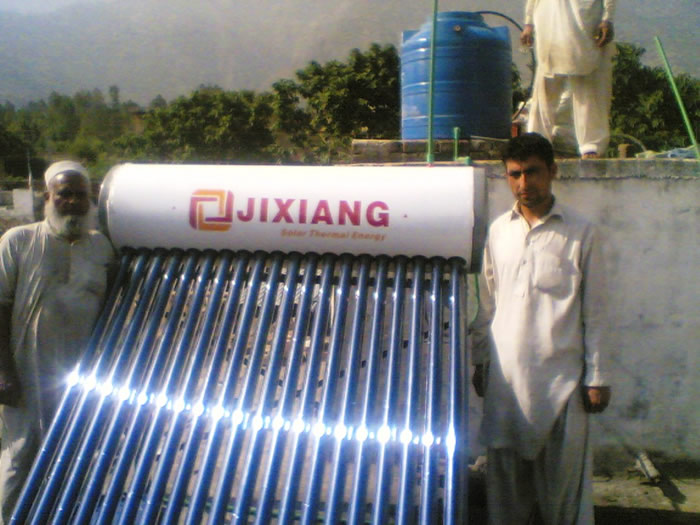
SOLAR THERMAL APPLICATIONS
Solar water heating is one application of the Solar Thermal. Solar Water Heaters (SWH) are of two types; one is non-pressurized solar water heating (SWH) and other is Pressurized Solar Water Heating. In non-pressurized solar water heater, the collector (Vacuum tubes or flat plate) and tank are mounted on one fixture and are in one integrated unit. Tank is mounted at top of the collector. There is no pump used in this type of system. This system works on flow of water through gravity from overhead tank to solar water heater tank (stainless steel tank with 55 mm poly-urethane insulation) and from this tank onward to vacuum tubes and by natural convention process, the hot water circulates and heats up the whole tank. It usually takes four hours to heat up the water of 300 litters up to 45 Degree in peak winter season and 60 Degree in moderate season and 90 degree in peak hot season. So the temperature of water varies as per ambient temperature. Usually 50 Litters per person per day is taken while designing the system for domestic use. For industrial application of washing and cleaning, the total water load in terms of flow is calculated to design the system. The total number of solar water heaters connected in parallel or series depends upon the daily water consumption and temperature requirement.
The collectors used in Pressurized Solar Water Heaters can be flat plate or vacuum tubes. In pressurized solar water heaters, the tubes are made of copper and these are closed tubes and the upper top has bulb dipped in water tank through which heat radiates into the water in tank. The copper tubes are filled with ether which expands quickly when sun radiations fall at tubes. So in this type of system water does not enter into the copper tubes and therefore no chance of rusting. In pressurized systems, tank is separate than the collector unit and no gravity is required. There are two circuits one is primary circuit and other is secondary circuit. In primary circuit the glycol moves through circulatory pump by controller and in secondary circuit the water moves through pump or without pump to end points .These kind of systems are used in Solar Swimming Pools, Solar pre-heat for Boiler, Solar space heating, De-greasing applications in industries and buildings. The tanks in pressurized systems can have one cooper coil or two coils depending upon the type of applications. In large systems where quick heat exchange is required, the heat exchangers are also used.
There are four myths which are creating problems in its growth solar water heaters in commercial and industrial sectors. One is that if you install SWH, the hot water is available all the times. This is not true. The hot water is a resource which is limited as per size of the SWH. If you install one 300 ltrs of SWH, in 24 hours you will get 300 ltr hot water which you use once or use slowly whole of the day. If you need more water, you have to have more than one SWH as per hot water load requirement. Second myth is that it can be installed anywhere. It is not true. It can be installed where south direction is available, whole day sun is available and space for placing the SWH is available. So site analysis is the pre-requisite of installing solar water heaters. Third myth is that every plumber can install this system. It is not true. Only trained person can install such systems. Get installed your systems from REAP certified technicians only. Forth myth is that if solar water price is Rs.40,000, this is total cost. It is not true. The total cost is the cost of SWH, piping and plumbing accessories which can vary from Rs.2000 to Rs.10,000 depending upon site conditions. Scaling is another issue in SWH which has to be considered during performance monitoring of systems. Amount of scaling depends on water quality. In industrial applications, water softeners are required to soften the water before they enter into solar collectors. Get your systems de-scaled in once two years as it will improve its performance. Clean on weekly basis the collectors as in our country dust is too much.
Solar Thermal Power Plant is another application of solar thermal. Solar thermal power plant consists of solar collectors which can be of Dish, parabolic or tower type formation, steam generation process and steam generators for converting steam into electric power. These thermal power plants are very economical way of generating power as compared to solar electric power generation. The operational expense is more than that of solar electric systems. Space requirement is more than Solar electric. High power upto 200 MW can be generated through this solar thermal power plants.
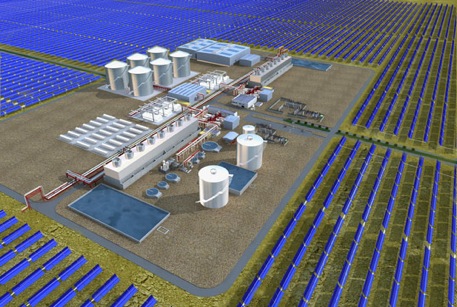
SOLAR PHOTOVOLTAICS
Solar Photovoltaic is the technology by which solar energy is converted into electrical energy and its major applications in industrial and commercial sectors are; Solar Homes Systems upto 2000 W, Solar Lighting, Solar Power Plants from 10 KW to 20 MW, Solar Parks upto 20 MW, Solar UPS, Solar Roof Based On Grid Power Generation, Solar Traffic Signals Lights, Power for Remote Terminal Units, Power for Telecommunication Towers and BSC and MSC, Building Integrated Photovoltaic System, Military signaling applications, Solar water Pumping, Solar Lighting for Parking lots, Solar Lighting for Bus Stop Shelters etc.
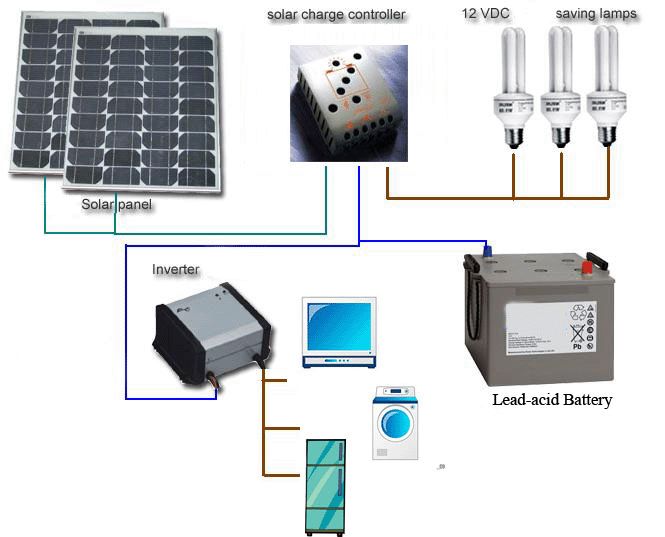
SOLAR PHOTOVOLTAIC APPLICATIONS
SOLAR ELECTRIC POWER GENERATION
Solar Electric Power can be generated varying from 100 Watts small solar home systems to 100 MW Solar Power Plants or sometimes more than that. The solar power systems are of two types; one is off-grid and other is on-grid systems. In off-grid systems, the system has no link with Utility grid and components used in Systems are Solar Panels, Charge Controllers, Inverters, Deep Cycle Batteries, mounting and electric accessories. Solar Panels convert solar radiations into electric current and this current passes through charge controllers which charges the battery by controlling current for the battery. Charge controllers maintain control on charging the battery for its long life. So the DC power is stored in Batteries and this stored energy is converted into AC Power to operate the AC appliances. The DC appliances can be operated directly with the battery. So DC and AC load can be operated through a solar power system.
Un-professional and Un-trained people in the market are selling under-designed and low quality systems because of which the customers are losing confidence in solar technology. On the one hand, solar technology has high upfront costs and on the other hand people are selling low quality and under-designed systems to cut down the costs. The most important thing in solar Power systems is its right design and putting high quality system components which should guarantee faultless operation of the whole systems for 20 years. The other important thing for customers is that they should not buy system in watts but systems in watt-hours. For example 500W system can work for one hour and can work for 24 hours. If it generates power for one hour, the system capacity will be 500 Watt-Hours and if the system works for 24 hours, 12000 Watt-Hours (12 KWHR per day means 12 units per day). Now both systems are of 500 W but their operational hours vary. The cost of the system is calculated as per watt-hours, not as per watt. So customers should not buy watts but watt-hours as they are buying not watts but watt-hours which is real energy as they pay their electric bills in watt-hours or Kilo Watt Hours which is called the Units in common language.
On-grid systems are common in the world and world is moving toward on-grid technology. On-Grid system is that system which is connected with Utility Grid with built in two meters one is export meter and one is import meter and in some case one bi-directional meter which reverses when electricity is sold to Grid and at the end the user pays for the net meter reading. In two meters system, when energy is sold to Grid, the export meter counts and when energy is bought from grid, import meter counts the power consumption and user has to pay the net reading of both meters. User/Power producer will be paid by the Utility if Utility has bought more and sold less. To make legal such systems, there is FIT (Feed-In-Tariff) policy by which the solar power generation is governed. Through FIT policy, the Government fixes up the rate of buying from solar power producers as per slabs. In Pakistan, there is no net-metering policy and there is no FIT policy. On-Grid power is cheaper and does not have batteries. One of the barriers in FIT in Pakistan is the continuous load shedding because such systems stop working as such systems have no back up when grid is off.
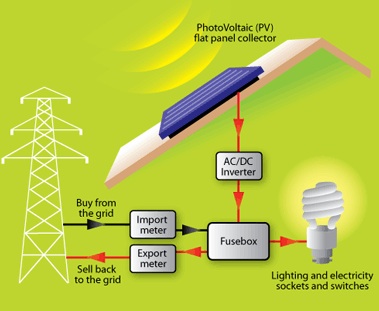
SOLAR LIGHTING
Solar Lighting is another application of solar photovoltaic. Solar Lighting has many types. The solar lighting can be solar street lighting, solar flood lighting, solar garden lighting or some special applications of lighting. In solar lighting, very important thing is the designing of solution so that the lights work automatically and remain on as per requirement. Most of the solar lights, we see un-lit in the nights or they lit for some hours and then go off against the timing requirement. The reason for this is that the un-professional people have designed and sold under-designed and low quality systems. While purchasing the solar lighting systems, define your specifications and then buy systems accordingly and monitor their operational hours continuously.
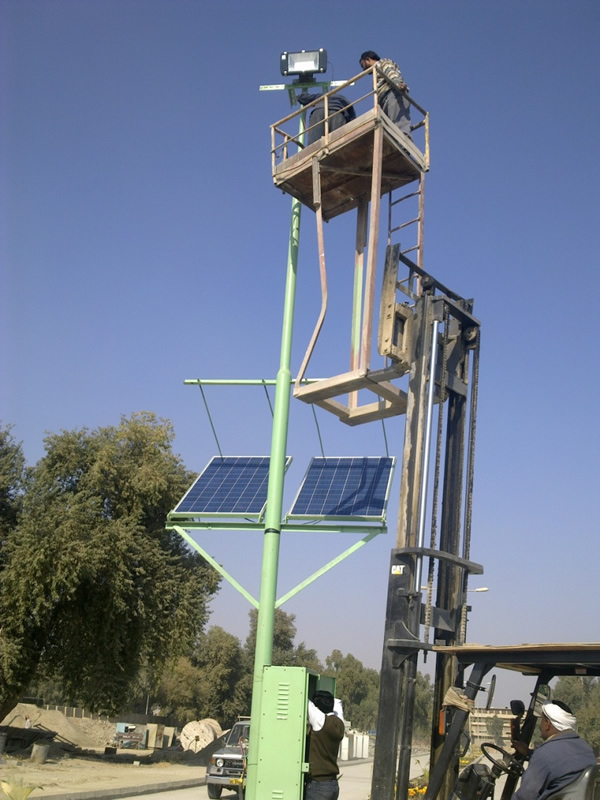
SOLAR PUMPING
Solar Pumping is another application of solar photovoltaic. The solar pumping systems are of two types, one is DC solar Pumping system and other is AC solar Pumping system. DC solar pumping systems are small systems which are for domestic purposes, offices and irrigation of small lands up to two Acres. These DC solar pumping systems are very reliable and cheaper. In this system the pump motor is DC motor and one controller controls its operation which is MPPT controller responsible for smooth operation of the pump without the need for batteries. The maximum flow with DC systems can be upto 10,000 Gallons per day with maximum head of 200ft.
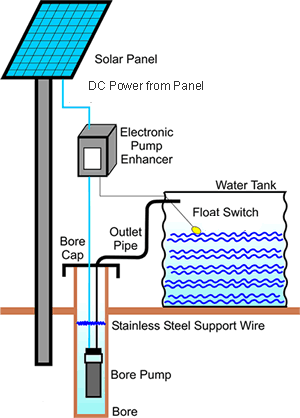
Solar AC Pumping system consists of AC Pump, Pump Controller and solar panels. These are big systems of motor power varying from 2KW to 60KW and their up-front costs vary from Rs.1M to 20M. These AC pumps are for all kinds of agriculture and big farming applications. The flow can vary from 10m3 per hour to 300 m3 per hour with head varying from 100 ft to 600 ft.
Solar Pumping is very specialized job and calls for high technical expertise starting from pump design & selections to installation and commissioning of systems. The customers should buy systems from professional companies and get installed from trained pump technicians.
Solar pumps are very economical if you compare operational costs with the conventional pumping system working through Diesel generators or Utility Grid. The payback varies from three to seven years depending on the type of system you are buying.
SOLAR POWER FOR TELECOMMNUCATION NETWORKS
Solar power for telecommunication networks is another application for solar photovoltaic. The telecommunication BTS towers have power supply from Diesel Generators in areas where no grid is available and have back up diesel generators where grid is available. Operational Expense of power generator is very high. The best replacement of the diesel back up is the solar power which is clean energy. These systems can be hybrid (solar and wind) where wind is available. Many telecom operators have installed solar systems and they are very much satisfied and many are still in the process of planning for purchase of solar power systems. Again designing of solar solution for BYS towers is a specialized job.
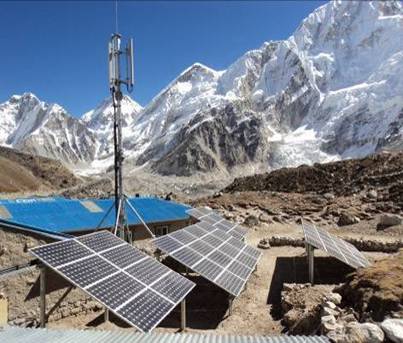
SOLAR POWER FOR REMOTE TERMINAL AND SURVELLIANCE UNITS
In Oil and gas production and processing plants, the parameters are controlled and monitored remotely through remote computerized terminal units. In surveillance systems, mostly the monitoring is remote and solar power application in this area is very reliable and cost effective.
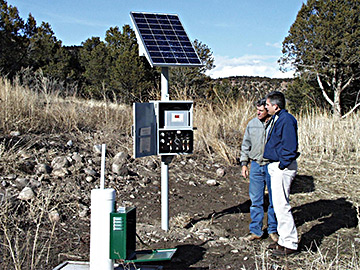
BARRIERS AND CHALLENGES
The barriers in the growth of solar energy applications are; upfront high costs because of heavy taxes and duties, Lack of customer awareness, Lack of designing and installation Skills, Lack of Subsidy and bank financing, Lack of promotion and will at Government Level, Lack of FIT ( Feed in Tariff Policy), Lack of Grid Interconnection Policy, high Pay back ranging from 10 to 13 years etc.
By enhancing the use of solar technology in industrial and commercial sectors, we can overcome energy crisis in Pakistan in a very short time as compared to other power generation options.
BREIF INTRODUCTION OF ENGR. FAIZ MOHAMMAD BHUTTA
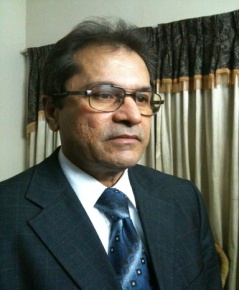 Faiz Mohammad Bhutta is an engineer plus MBA. He has 30 years of experience of serving at technical and managerial posts in national and multinational companies; He is currently serving as General Manager Izhar Energy Services, Izhar Group of Companies. Apart from his professional career, he has served as visiting teacher on engineering and management subjects in Air University, COMSATS University and UMT.
Faiz Mohammad Bhutta is an engineer plus MBA. He has 30 years of experience of serving at technical and managerial posts in national and multinational companies; He is currently serving as General Manager Izhar Energy Services, Izhar Group of Companies. Apart from his professional career, he has served as visiting teacher on engineering and management subjects in Air University, COMSATS University and UMT.
He has also contributed as PEC Task force member on Building Energy Code 2011.
He is chairman of Renewable and Alternate Energy Association of Pakistan Lahore Chapter. He is member of organizations namely International Solar Society Germany; ASHRAE USA, Executive Member of REAP, Life member of PEC , Life Member of HVACR Society, Life Member of IEP and Life member of IEEP.
He is a writer & Trainer also and his articles are published in EIR, HVACR Journal, TechnoBiz, Engineering Horizon, Alternate Energy Magazine, HVACR Journal etc. He is also editor of REAP Newsletter.
He has attended lot of national and international EXPO and Conferences on Alternate Energy in China and Germany.
The content & opinions in this article are the author’s and do not necessarily represent the views of AltEnergyMag
Comments (0)
This post does not have any comments. Be the first to leave a comment below.
Featured Product

